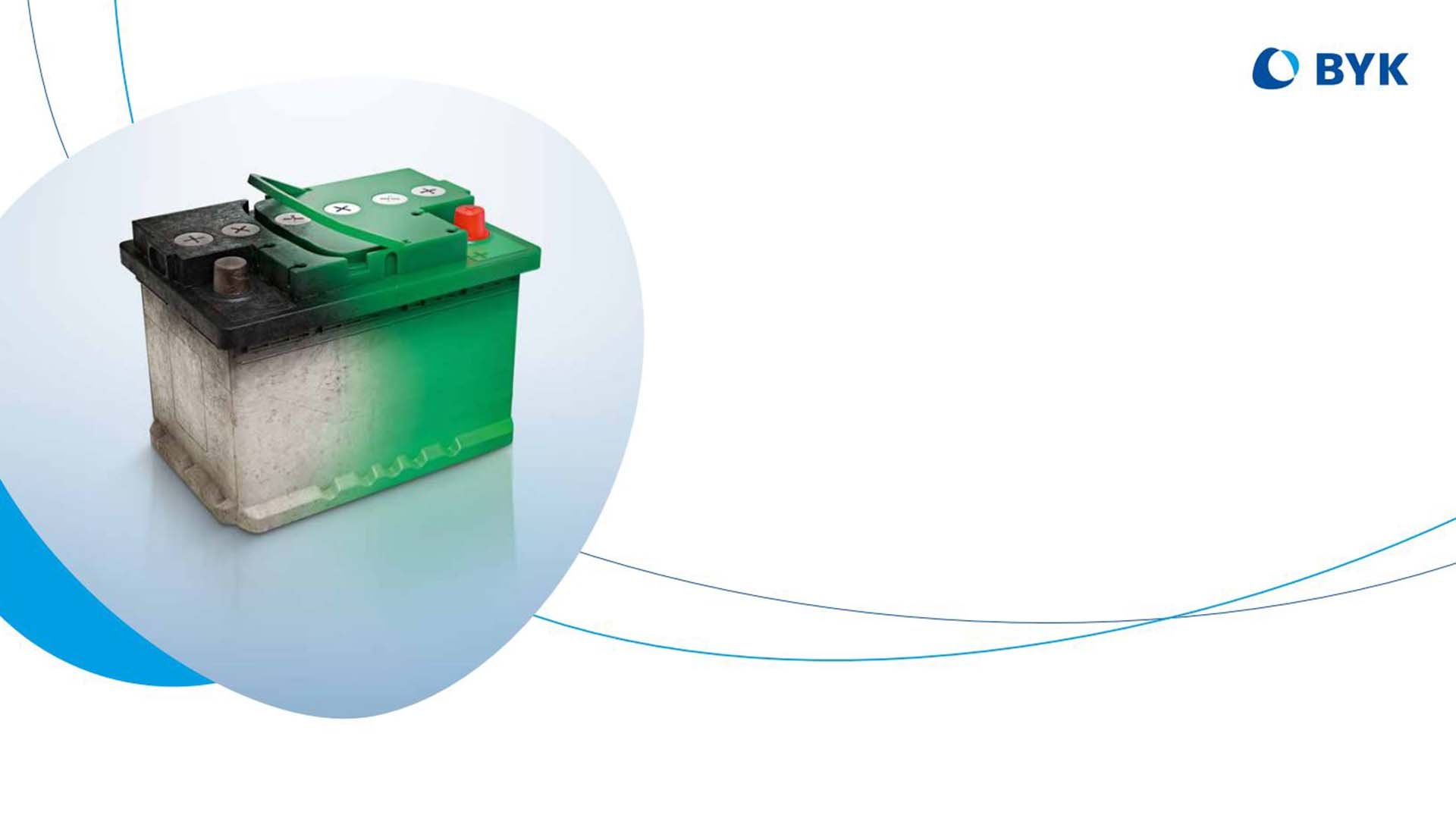
Technical brochure
Additive solutions for recycling applications
Upcycling instead of downcycling is a huge plus for our environment, because upcycled products remain in the circular economy for a significantly longer period. BYK provides various additives that enhance the processing and long-term stability of plastics such as polyolefins and PET to make new, high-quality applications possible. This way, for example, old battery housings, beverage crates or PET bottles can be used to make new ones.

These days, a world without plastic products is inconceivable. Regardless of whether they are in automobiles, floor coverings, wind turbines, or toothbrushes – plastics are useful everyday companions for us humans.
In the interests of conserving natural resources and of more sustainable economic activities, BYK has taken an important step on behalf of customers towards upcycling with products for thermoplastic recycling. By stabilizing the plastics during processing, BYK’s recycling additives significantly improve the quality of the recycled materials. They subsequently facilitate new high-grade applications for the used plastics.
Thus, for example, RECYCLOBYK 4372 improves the recycling of HDPE material that can be used, for example, in pallets and bottle crates designed for outdoor use. This is achieved by means of targeted restabilization of the polymer matrix. Adding RECYCLOBYK 4371 is especially helpful in restabilizing polypropylene and polyolefin compounds that are exposed to particularly aggressive substances. Additionally, other products out of BYK’s thermoplastic portfolio like some of the BYK-MAX and SCONA products support the use of recyclates.
With the use of BYK’s additives for recycling, new everyday products can thus be won from old battery cases, PET bottles, pails, and beverage crates, that themselves are capable of being reintroduced into the recycling economy. Our additives for recycling are designed to improve the recyclates’ quality, enabling new high-quality applications for used plastics rather than downcycling them. These products can be employed to recycle products based on HDPE, PP, PET MFI, PE/Nylon, which include battery cases, bottle caps, bins, or crates.
The requirement to use ever greater quantities of recycled polymers in final formulations and the almost unlimited number of different polymer combinations, fillers, and other ingredients face the industry with a large number of challenges. Overcoming these challenges requires a whole toolbox and a multi-level approach to achieve the desired properties.
At the beginning of the first cycle of use, thermoplastics are equipped with a variety of raw materials and additives to prepare them for their intended use. These include, for example, UV stabilizers or additives to increase mechanical and thermal properties. As the finished parts are used and age, the components lose their effectiveness and are depleted. At the end of use, there are various options, like storage at landfill, incineration for energy production or recycling for reuse of the polymers/polymer blends.
The use of BYK additives creates added value throughout the whole recycling value chain. The granulated, non-dusting delivery form of BYK products ensures safe handling and dosing 1. In addition, the improvement in processability enables process optimization, lower lead times 2, and a reduction in rejects 3, while the quality of the component can be significantly increased by reducing odor and increasing strength 4.
More in-depth information, e.g. about BYK’s contribution to efficient recycling of thermoplastics, restabilization of recycled thermoplastics, recyclates from the automotive industry, recyclates from the packaging industry, fiber-reinforced plastics with recyclates and reduction of VOC and odors are explained in detail in our technical brochure TP-A 8.
Prouduct recommendations especially designed for the recycling of thermoplastics can be found in our product guide TP-G 2 or directly here:
If you delete your search history, all your previous searches will be deleted permanently.